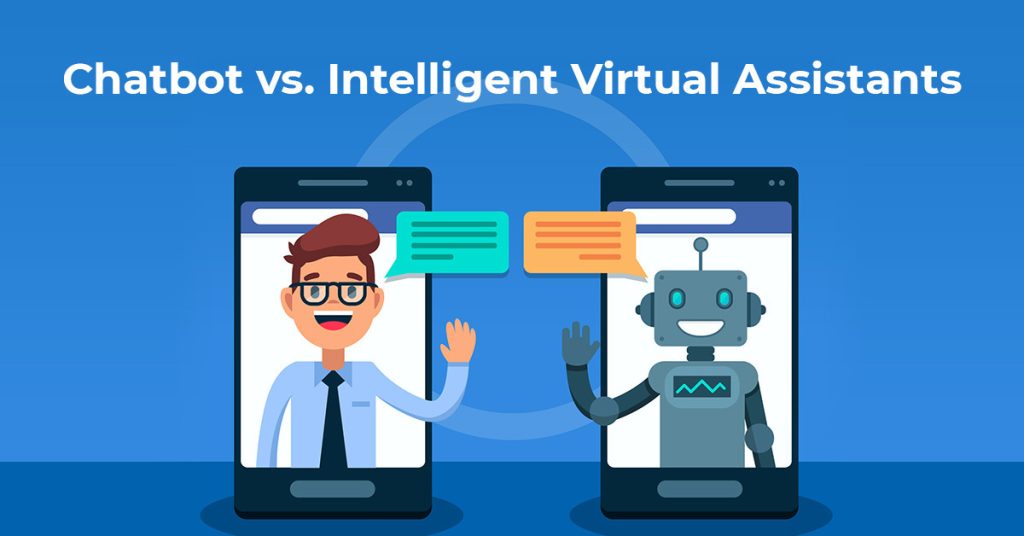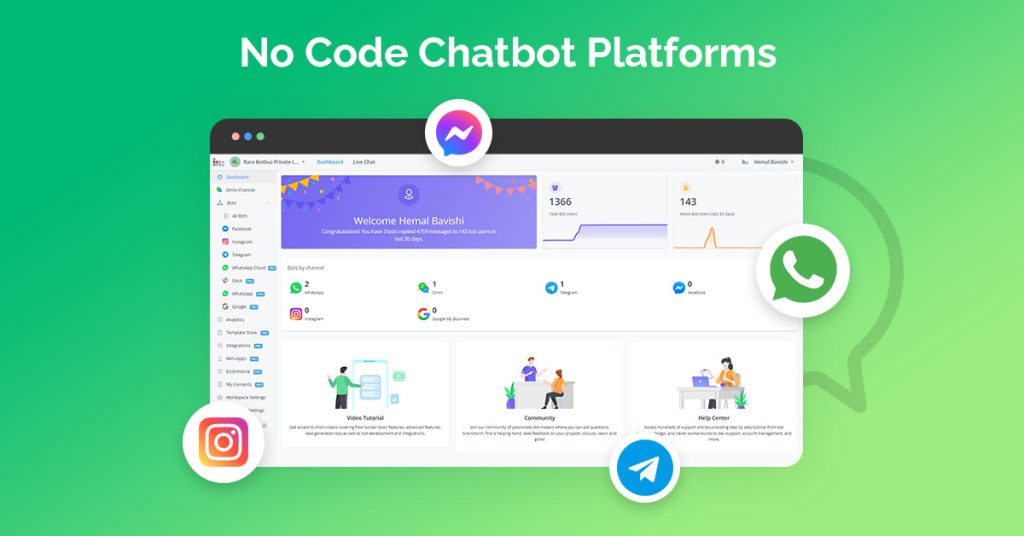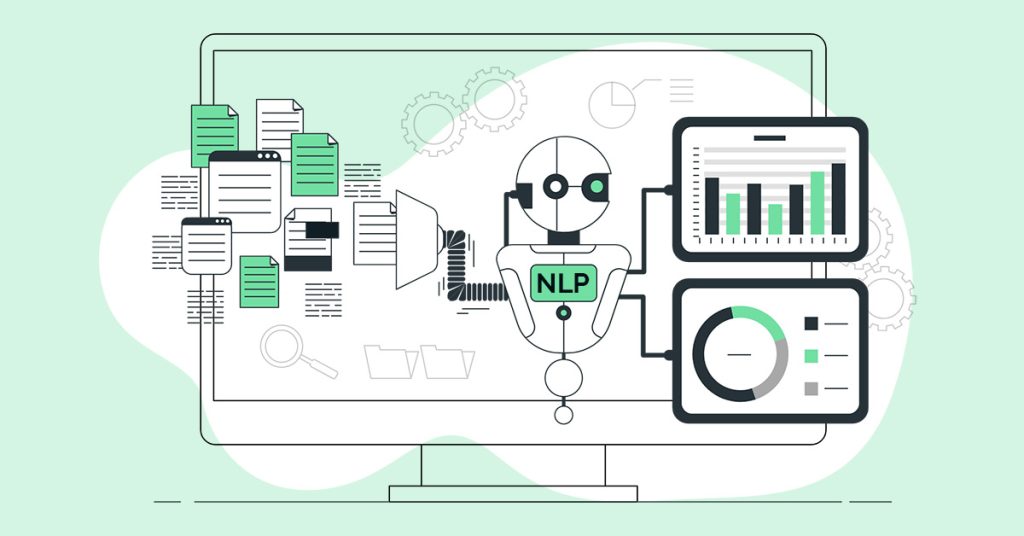- Chatbot and Intelligent Virtual Assistants :
- Definition and Overview of Chatbots :
- Definition and Overview of Intelligent Virtual Assistants :
- Factors to consider when choosing between chatbots and Intelligent Virtual Assistants : :
- Use Cases : Botbuz Chatbots vs. Intelligent Virtual Assistants :
- Key takeaways :
- Conclusion :
Chatbot and Intelligent Virtual Assistants :
In the ever-evolving landscape of technology, chatbots & intelligent virtual assistants (IVAs) have emerged as powerful tools for businesses & individuals alike. While often used interchangeably, these two terms represent distinct capabilities and functionalities. Understanding the key differences between them is crucial. It helps to make informed decisions about their deployment.
Definition and Overview of Chatbots :
Chatbots are software programs. They are designed to simulate conversation with human users through text or voice interactions. They operate within predefined rules and scripts. Thus, responding to specific keywords or questions with programmed answers. Chatbots are often deployed for tasks such as :
- Customer service : Answering frequently asked questions, resolving basic issues & providing information about products or services.
- Marketing and sales : Generating leads, qualifying prospects, and providing product demos.
- Lead generation : Capturing contact information and engaging potential customers.
- Social media engagement : Responding to inquiries, providing customer support, and promoting brand awareness.
Chatbots offer valuable automation and efficiency benefits. But their capabilities are limited by their static nature. They struggle to handle complex queries, adapt to new situations, or learn from past interactions.
Definition and Overview of Intelligent Virtual Assistants (IVAs) :
Intelligent virtual assistants are a more advanced category of chatbots. It is empowered by artificial intelligence (AI) and machine learning (ML) technologies. Unlike their rule-based counterparts, IVAs can understand & respond to natural language. It also learns from user interactions, and adapt their behavior over time. This allows them to handle a wider range of tasks, including :
- Personal assistance : Scheduling appointments, setting reminders, managing to-do lists, and providing personalized recommendations.
- Complex problem-solving : Understanding intricate tasks, analyzing data, and generating creative solutions.
- Multilingual communication : Translating languages and providing assistance in multiple languages.
- Contextual awareness : Remembering past interactions & tailoring responses based on the user’s history and current situation.
IVAs offer a more natural and engaging user experience compared to traditional chatbots. However, their development and implementation require more technical expertise and resources.
|
Feature
|
Chatbots
|
Intelligent Virtual Assistants (IVAs)
|
|---|---|---|
|
Technology
|
Rule-based scripts
|
AI and ML-powered
|
|
Capabilities
|
Limited to predefined responses
|
Can handle complex queries, learn, and adapt
|
|
Interaction style
|
Static and scripted
|
Dynamic and natural
|
|
Context awareness
|
Minimal
|
High level of context awareness
|
|
Multilingual support
|
Limited or non-existent
|
Robust multilingual capabilities
|
|
Development complexity
|
Relatively simple
|
Requires more technical expertise
|
|
Cost
|
Lower
|
Higher
|
Chatbots and IVAs represent two distinct stages in the evolution of conversational AI. Chatbots offer a basic level of automation. They are suitable for simple, repetitive tasks. IVAs, on the other hand, provide a more sophisticated user experience. They are capable of handling complex inquiries and tasks. The choice between chatbot and IVA depends on the needs of the user or organization.
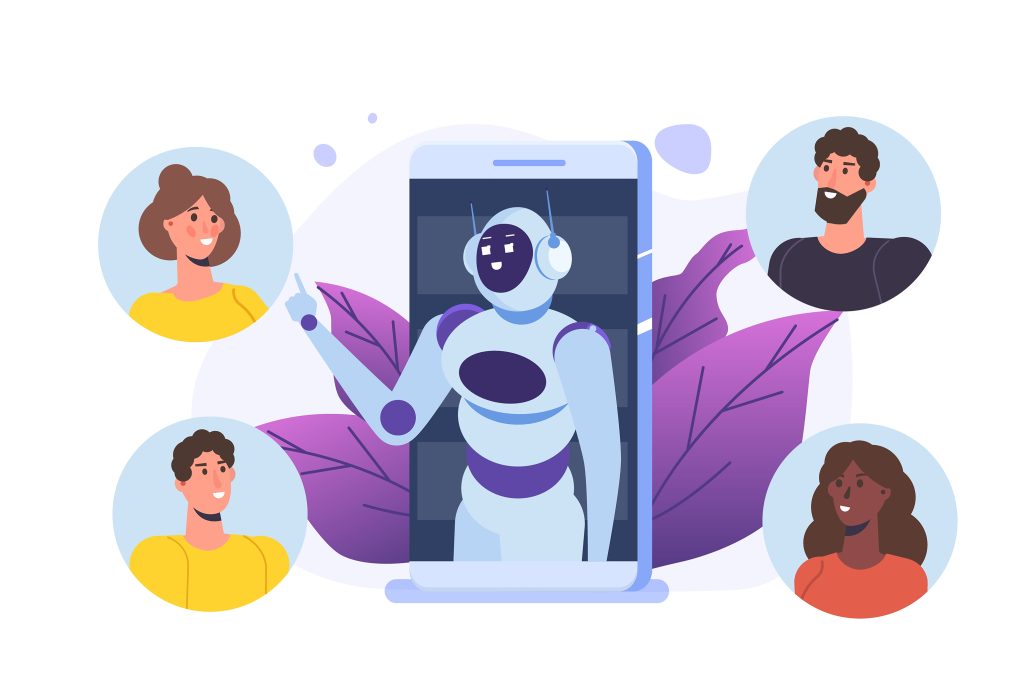
Functionality Comparison :
A. Communication and interaction abilities
Chatbots :
- Primarily focused on text-based communication and limited voice interaction.
- Employ predefined buttons and responses, limiting interaction flexibility.
- Difficulty handling complex or nuanced inquiries.
- Limited ability to personalize responses based on user context or history.
IVAs :
- Can handle both text & voice interactions with greater fluency and natural language understanding.
- Utilize prompts and dynamic conversation flows for more engaging interactions.
- Can adapt responses based on context, user behavior, and past interactions.
- Offer multilingual support for broader user accessibility.
B. Complexity and depth of conversations
Chatbots :
- Conversations are limited to basic questions and answers within a predefined scope.
- Unable to understand complex scenarios or follow extended dialogue threads.
- Limited ability to handle follow-up questions or clarify ambiguities.
IVAs :
- Can handle complex conversations with multiple layers and branching storylines.
- Utilize advanced AI and NLP to understand the context and intent of user queries.
- Can follow multi-turn dialogue threads and address follow-up questions effectively.
- Capable of learning from user interactions and refining their responses over time.
C. Integration with AI, machine learning and NLP
Chatbots :
- Primarily rely on rule-based systems with minimal AI or machine learning components.
- Limited ability to learn from data or adapt their responses based on user feedback.
- NLP capabilities are often limited to keyword matching and simple pattern recognition.
IVAs :
- Heavily leverage AI, machine learning, and NLP technologies for advanced functionality.
- Utilize machine learning algorithms to learn from user interactions. It helps to improve their responses over time.
- Employ sophisticated NLP techniques for deeper understanding of user intent, sentiment, and context.
- Can access and process external data sources. It helps in providing more comprehensive and personalized information.
IVAs offer significantly more advanced communication and interaction capabilities compared to chatbots. Their ability is to handle complex conversations & integrate with AI technologies. They learn from user interactions. Thus, making them suitable for broader applications requiring deeper understanding & engagement with users. However, chatbots may still be a viable option for simple tasks & situations where basic scripted responses are sufficient.
User Experience and Human Interactions :
A. User engagement with chatbots vs. IVAs
Chatbots :
- Engagement : Can be monotonous and repetitive due to limited capabilities and scripted responses.
- User satisfaction : Often leads to frustration and disengagement when encountering complex queries or unexpected situations.
- Trust and rapport : Difficulty in building trust or rapport with users due to lack of NLP and adaptability.
Intelligent Virtual Assistants :
- Engagement : Can create engaging and personalized experiences through dynamic conversations and AI-powered interactions.
- User satisfaction : Leads to higher user satisfaction. It is due to the ability to handle complex queries and adapt to individual needs.
- Trust and rapport : Builds trust and rapport with users. It is through natural language understanding, context awareness, and personalization.
B. Personalization and contextual understanding
Chatbots :
- Personalization : Limited or non-existent personalization due to reliance on pre-defined scripts and data.
- Contextual understanding : Minimal understanding of user context or history, leading to generic and irrelevant responses.
Intelligent Virtual Assistants :
- Personalization : Can personalize interactions based on user history, preferences, and past conversations.
Contextual understanding : Utilizes AI and NLP to understand the context of user queries. It also helps to provide relevant and personalized responses.
C. Balancing automation with human touch
Chatbots :
- Human touch : Often lacks human touch, leading to sterile and impersonal interactions.
- Escalation to human assistance : Frequent need for escalation to human agents. It is due to limitations in handling complex situations.
Intelligent Virtual Assistants : :
- Human touch : Can be designed to provide a human-like touch. It is through conversational nuances, humor, and empathy.
- Seamless human handover: Can seamlessly escalate to human agents when necessary, ensuring a smooth user experience.
IVAs significantly enhance the user experience and human interaction compared to chatbots. Their ability is to personalize responses & understand context. It also provides a human touch fosters trust, satisfaction & engagement with users. Automation is valuable. IVAs ensure that human interaction remains available when needed. Thus, creating a balanced & effective user experience.
Factors to consider when choosing between chatbots and IVAs :
Choosing between a chatbot and an IVA requires careful consideration. There are several factors to ensure the solution aligns with specific needs & resources. Here is a breakdown of key aspects :
- Complexity of tasks : Chatbots are suitable for simple, repetitive tasks. While IVAs excel at handling complex scenarios and multi-layered interactions.
- User experience : Prioritize user satisfaction and engagement if natural language understanding and personalization are crucial.
- Budget and resources : Chatbots are generally less expensive and easier to deploy. While IVAs require more technical expertise and resources.
- Scalability and future needs : Consider if the solution needs to adapt and grow alongside your business or user base.
Integration complexities and ease of deployment :
- Chatbots : Often integrate with existing systems through APIs. It requires minimal technical expertise for deployment.
- IVAs : Integration can be more complex due to AI and NLP components. It requires specialized technical skills and infrastructure.
- Deployment time : Chatbots can be deployed quickly. While IVA implementation may take longer due to configuration and training requirements.
Cost considerations and scalability :
- Chatbots : Generally lower upfront cost and maintenance compared to IVAs.
- IVAs : Higher initial cost due to advanced technology and ongoing maintenance needs.
- Scalability : Chatbots may face limitations as user base and interaction complexity increase. While IVAs can scale more efficiently.
There is no one-size-fits-all answer to the chatbot vs. IVA decision. Carefully assess your specific needs, resources, and future plans. It helps to determine the optimal solution. Remember, while chatbots offer a cost-effective entry point for basic automation. IVAs provide a more comprehensive & engaging experience with advanced capabilities and long-term scalability.
Use Cases : Botbuz Chatbots vs. Intelligent Virtual Assistants
Both Botbuz chatbots and Intelligent Virtual Assistants (IVAs) offer automation. But customer interaction, their strengths and weaknesses lie in different areas. Let’s compare their suitability for various use cases :
Customer Support and Service :
Botbuz Chatbots :
- Suitable for handling FAQs, order tracking, and basic troubleshooting.
- Can provide scripted responses and offer limited personalization.
- Useful for deflecting low-level inquiries and reducing agent workload.
IVAs :
- Can handle complex inquiries, understand context, and offer personalized resolutions.
- Learn from interactions and adapt responses over time.
- Ideal for handling escalated issues and building long-term customer relationships.
Personal Assistants and Task Automation :
Botbuz Chatbots :
- Can schedule appointments, manage calendars, and set reminders.
- Automate repetitive tasks based on predetermined rules.
- Useful for streamlining basic personal workflows.
IVAs :
- Proactively anticipate user needs and suggest actions.
- Integrate with external services and devices for deeper automation.
- Can handle complex tasks and adapt to changing user preferences.
E-commerce and Sales Support :
Botbuz Chatbots :
- Answer product questions, provide recommendations, and offer basic purchase assistance.
- Can qualify leads and initiate sales conversations.
- Useful for pre-purchase engagement and initial lead generation.
IVAs :
- Personalized product recommendations based on user behavior and purchase history.
- Handle complex product inquiries and offer advanced support.
- Can close sales, upsell products and provide post-purchase assistance.
Key takeaways :
- Technology : Chatbots rely on rule-based scripts, while IVAs leverage AI and ML.
- Capabilities : Chatbots handle basic tasks with predefined responses. While IVAs handle complex scenarios with natural language understanding and adaptation.
- User experience : Chatbots offer limited engagement, while IVAs provide personalized and engaging interactions.
- Implementation : Chatbots are easy to deploy, while IVAs require technical expertise and resources.
- Cost : Chatbots are cheaper upfront, while IVAs have higher initial and maintenance costs.
- Scalability : Chatbots face limitations with growth, while IVAs scale efficiently.
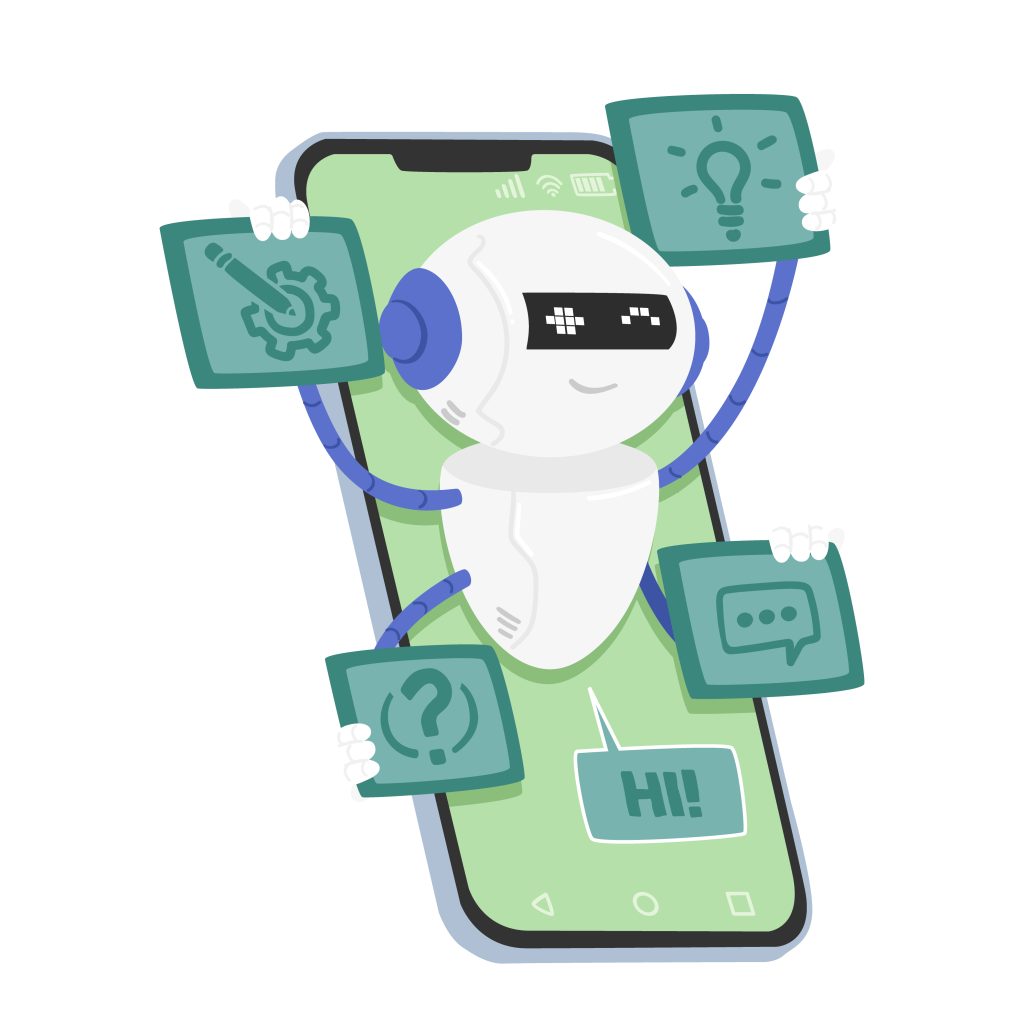
Conclusion :
In the dynamic landscape of AI-powered interactions, Botbuz chatbots & Intelligent Virtual Assistants (IVAs) represent two distinct paths. It harness the power of conversation. While both offer automation and customer engagement, their strengths lie in different domains.
Botbuz chatbots, like trusty assistants, excel at tackling repetitive tasks with unwavering efficiency. They’re the silent heroes who handle FAQs, deflect basic inquiries & streamline workflows. Thus, freeing up valuable human resources for more complex matters. For cost-conscious businesses seeking predictable automation, Botbuz chatbots offer a reliable & affordable entry point into the world of conversational AI.
IVAs, on the other hand, are the conversation virtuosos. They wield the power of natural language understanding and machine learning to navigate intricate scenarios. It also personalized interactions & builds lasting relationships. They’re the proactive partners who anticipate needs & offer tailored solutions. It also adapts to user preferences over time. For organizations seeking sophisticated engagement and personalized experiences, IVAs are the key to unlocking the full potential of conversational AI.
Ultimately, the choice between Botbuz chatbots and IVAs is not a binary one. It’s a strategic dance of assessing your needs & prioritizing your goals. Thus, understanding the unique strengths each technology brings to the table. Consider them not as rivals, but as complementary tools in your AI toolbox.
Botbuz chatbots can lay the groundwork for efficient automation. While IVAs can elevate interactions to new heights of personalization and engagement. By strategically deploying both one can create a seamless, intelligent & transformative conversation experience for your users.
So, embrace the symphony of AI possibilities. Whether you choose the steady rhythm of Botbuz chatbots or the dynamic melody of IVAs. The true magic lies in understanding the music of your users and crafting a conversation that resonates with their needs.
